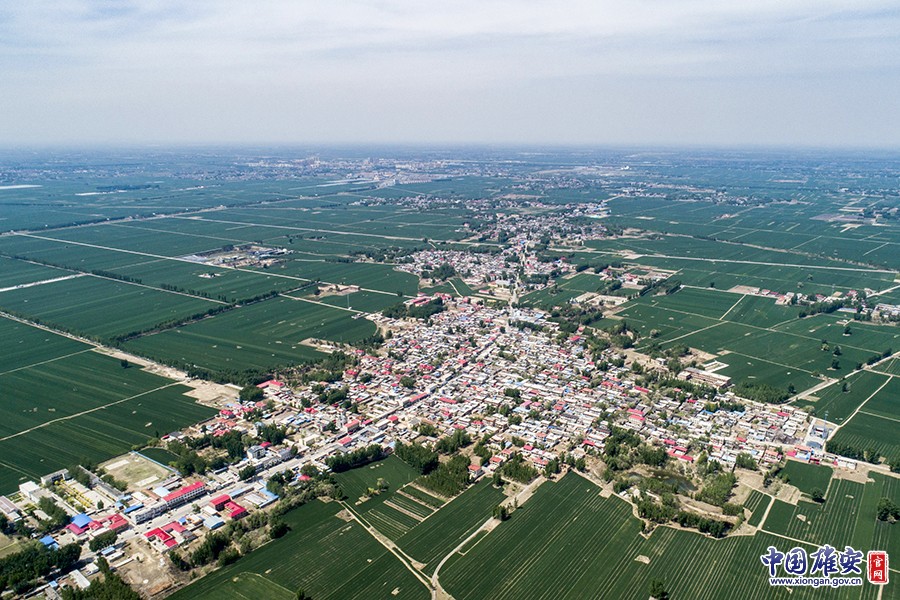XIONGAN NEW AREA: “Is China’s ‘city of the future’ a replicable model? Success of Xiong’an’s ambitious green experiment seems guaranteed but its strength may make it hard to emulate,” writes Li Jing
Note to Reader:
When its blueprint was unveiled just over a year ago, Xiong’an New Area was billed as a showcase for President Xi Jinping’s vision of high-quality urbanisation, a project that would be “crucial for the millennium to come”.
Green, innovative and state-of-the-art, Xiong’an has been heralded as a remedy to the “urban diseases” that plague China’s major cities: air pollution, water scarcity, and urban sprawl.

Photo taken on April 21, 2017 shows the scenery of the county seat of Rongcheng, north China’s Hebei Province.
China approves master plan for Xiongan New Area
In 2017, China’s central authorities approved a master plan for Xiongan New Area, reiterating that its creation will carry “lasting importance for the millennium to come.”
The new area will span Xiongxian, Rongcheng and Anxin counties in Hebei Province, eventually covering 2,000 square kilometers. Hebei announced recently it would call for international bids to plan and design Xiongan New Area.
An area of about 100 square km between Rongcheng and Anxin counties will be developed first. It will be a location for many of Beijing’s non-capital functions and relocated population. The area will become a new home for Beijing’s colleges, hospitals, business headquarters, financial and public institutions.

An aerial photo of Anxin County, Xiong’an New Area
What does China’s “City of the Future” look like?
“China’s green city projects have been led by local governments but Xiong’an is mostly the product of central planning,” wrote Lin Jin in an article published by chinadialogue.net, an independent organisation dedicated to promoting a common understanding of China’s urgent environmental challenges.
 Li Jin is a freelance writer covering environmental and climate issues. She was a visiting journalist fellow at the Reuters Institute for the Study of Journalism at the University of Oxford, and senior reporter at the South China Morning Post and China Daily.
Li Jin is a freelance writer covering environmental and climate issues. She was a visiting journalist fellow at the Reuters Institute for the Study of Journalism at the University of Oxford, and senior reporter at the South China Morning Post and China Daily.
“The prime incentive to create the New Area was to take on some of Beijing’s ‘non-capital’ functions and metropolitan burdens. It is officially designated as the heir apparent to China’s two urbanisation miracles, Shenzhen, and Shanghai’s Pudong New District.
“More specifically, Xiong’an will be the first test case of the leadership’s ecological vision being applied to a mega-city, in which everything needs to be built from scratch in what was previously an economic backwater.
“Although Xiong’an faces very particular challenges, the project could have wide-ranging impacts on the rest of China. As a key part of the leadership’s vision, Xiong’an will become a model for a new type of urbanisation in China.”
Will Xiong’an be different?
 Charles Bowman, Lord Mayor of the City of London, said Xiong’an “has the potential to become one of the world’s most smart and sustainable cities”.
Charles Bowman, Lord Mayor of the City of London, said Xiong’an “has the potential to become one of the world’s most smart and sustainable cities”.
“I have seen this first hand,” Bowman said, having visited the area earlier this year, “I look forward to seeing how the new centre can lend support to the project”.
To Learn More:
To read the complete article by Li Jing, download a copy of Is China’s ‘city of the future’ a replicable model?

Graphics shows China’s central authorities have approved a master plan for Xiongan New Area. The plan was approved by the Central Committee of the Communist Party of China (CPC) and the State Council, according to a document released on Friday, on April 20, 2018. (Xinhua/Lu Zhe)

